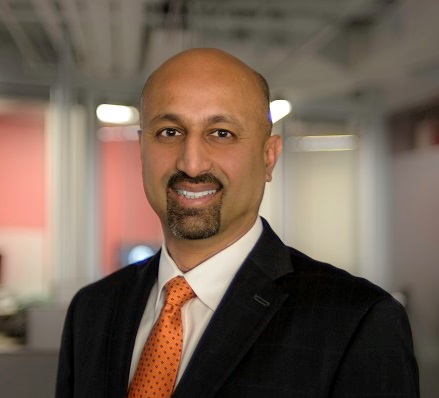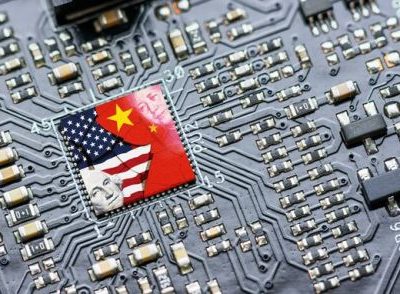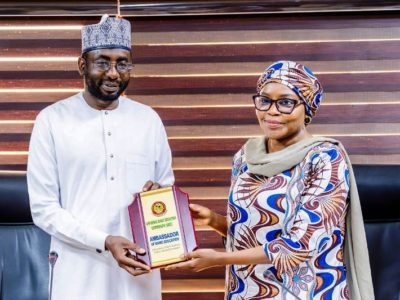An interview with Kalpak Gude, DSA President
Kalpak Gude, President of the Dynamic Spectrum Alliance, believes that the DSA Annual Global Summit will showcase more spectrum sharing policies, more cutting-edge practices and a collective strategy to not only bridge the prevailing connectivity divide but accomplish a better-connected future – for everyone.
The Dynamic Spectrum Alliance is heading to Cape Town, South Africa for its Fifth Annual Global Summit between 9th to 11th May. What are the main goals of the Summit this year?
The broad goal is to bridge the gap between the online and the offline. The world is embracing tens of billions of wirelessly connected devices, whilst accommodating 4 Billion people without Internet access. Doesn’t this just expose the dilemma we’re facing? It’s the digital divide. By assembling policy makers, regulators, academia, and public and private sector representatives, everyone can gain a valuable insight into the latest spectrum sharing policies and best practices – in order to look towards a more connected future, both economically and socially, in both urban cities and remote regions. Together, we can watch 5G networks and the Internet of Things come to life for a better-connected living across the globe.
Dynamic Spectrum Access regulations such as TV White Space are important for bridging the connectivity divide across the globe, but what are the main issues in Africa preventing us from bridging this divide?
In Africa, 75% of its citizens don’t have access to the internet and there are two root causes for this profound connectivity divide:
- Accessibility to connectivity in terms of infrastructure – due to the sparsely populated and incredibly vast space to cover with wireless signals.
- Affordability due to the poverty crisis on the continent (most Sub-Saharan Africans earn less than $1.25 per day).
To bridge the gap between this connectivity divide, Africa needs to turn its focus to the use of technologies that will lower the cost of access. The use of TV White Space technology via low-frequency spectrum (VHF/UHF), for example, can be a low-cost way to deploy networks that can cover large areas, as well as provide building penetration for better coverage in dense areas without adding additional in-building costs. The use of such technologies that share spectrum and operate on a licensed basis can help create sustainable networks that deliver cost-effective connectivity solutions.
How do we make spectrum more widely available?
In order to make spectrum more widely available, new sharing techniques must be used. Today, the most spectrum is unused most of the time, in most places. This does not mean that the spectrum is available for reassignment, as incumbents are using the spectrum for important services, but that opportunities exist for dynamic access that will dramatically change our assumptions regarding spectrum scarcity.
Dynamic sharing also enables a new type of harmonization that recognizes the contrasting requirements for different regions of the world. It is illogical to assume, as we have in the past, that Europe and Africa have identical requirements and share similar spectrum demands. Yet, this is exactly how global spectrum management has been driven, all in the name of harmonization. Dynamic access will change this by enabling, for example, Europe to drive greater mobile wireless use in the same bands that Africa relies on for satellite services. This is all managed by databases and sensing that can ensure compatible operations. This will need to be part of the new method of harmonization.
What does Dynamic Spectrum Access mean for a 5G future?
According to the European Commission 5G Action plan, spectrum needs for 5G will be across all three band types: low-, mid-, and high-band. The EC has identified 700 MHz for low-band; 3.4-3.6 GHz for mid-band; and will work through the ITU WRC-19 process for identification of high-band spectrum.
With 5G on the horizon, it’s not yet entirely clear what its emergence will mean for the world, nor is it clear what services it will enable. The most sensitive issue is the importance of spectrum in upcoming mobile networks, which will combine technologies and see operators using licensed and unlicensed spectrum to bring seamless connectivity across the globe. Dynamic allocation is the foremost way to enable a 5G future. Lightly licensed and unlicensed technologies, like Wi-Fi that has been the on-ramp to the Internet for most, will continue to play a critical role in enabling connectivity. The 5G future, incorporating all of these advances, will be more than just a faster Internet. It will be a seamless, everywhere, anyway and on any device, expectation that will change the way we interact with the world. And it begins with the spectrum abundance that is at the heart of dynamic spectrum access.
It is appropriate to see how 5G develops to ultimately decide how much spectrum will be needed in which bands, but it is likely that the sheer volume of new devices and greater bandwidth applications will necessitate additional spectrum requirements. What is already obvious is that clearing spectrum and assigning spectrum rights in the traditional manner will not be successful. What we are seeing now is that harmonization is more difficult because the requirements for spectrum in different regions is not the same. Further, there are important incumbent services in bands that are being looked at for future 5G services.
For that reason, it will be even more important to drive greater spectrum efficiency in utilizing the spectrum we have, as well as driving new sharing techniques that protect incumbent operations while enabling opportunistic access.
The DSA Global Summit will have a very strong set of panelists including representatives from the Federal Communications Commission (FCC), WhiteSpace Alliance, Adaptrum, Aruba and the Council for Scientific and Industrial Research (CSIR). This group will help to bring alive the exciting issue of what the next generation Internet will look like and how it will change our lives.
How will the Global Summit address the financial challenges to facilitate economic growth?
The key challenge to delivering connectivity to those who are currently without has always been based on the financial challenges associated with building networks, particularly in economically challenged or more rural areas. Developing business cases to service communities in these areas can also be difficult and requires driving down the cost of deployment. Governments and financial institutions often must come together to build the environments necessary to promote such investment.
The panel at the DSA Global Summit will address each of these issues with experts in the field from the financial community, the government, and commercial operators to seek a common understanding of the challenges, as well as solutions for a way forward.
Our exciting panel, including senior figures from the International Finance Corporation, Microsoft, the Universal Services and Access Agency of South Africa (USAASA) and more, will discuss these critical issues as they bring their years of expertise and knowledge to how new global connectivity ecosystems based on new spectrum approaches can be financed, along with real case studies.
Can we enable IoT through Dynamic Access Technologies and how will it work?
The Internet of Things (IoT) is expected to be a major part of the next generation Internet. IoT will see billions of new devices connected to the Internet from diverse locations including homes, businesses, roads, farms, airplanes, and even the most remote locals. The requirements associated with this massive addition of device connectivity will require new spectrum in all bands: low-, mid-, and high-band. Given the existence of incumbent spectrum users in most of these bands, dynamic spectrum access that protects incumbent services is likely to be a key tool for solving the scarcity problem.
The DSA Global Summit panel will discuss the importance of IoT to next generation networks and 5G; the spectrum demands that will be driven by IoT; the challenges of gaining access to spectrum and the role of dynamic access technologies to helping to solve these issues. The panel will also address the importance of IoT in Africa alongside the use cases, such as healthcare and farming. Our panel consists of experts in technology, healthcare, and academia. Panelists include experts from VistaLifeSciences Inc., CSIR, University of Strathclyde (Glasgow), Facebook and the New American Foundation.
What are the legal and policy challenges involved with spectrum sharing and how does the Global Summit plan to challenge them?
The power of dynamic spectrum access is that it starts with the idea that incumbent services are protected from interference and new services will operate opportunistically when and where spectrum is available. Governments must, however, identify reasonable protection requirements to enable the most beneficial sharing opportunities. Overprotective requirements harm investment and deployment, and under-protective requirements risk creating interference that harms existing services.
Spectrum sharing for broadband services also raises the question of how operators can develop business cases for the unlicensed or lightly licensed environment. WiFi has been very successful in enabling investment and it has also allowed carriers to reduce their CAPEX through WiFi offload. Will the greater use of dynamic sharing require operators to rethink the role of unlicensed and lightly licensed spectrum in their networks?
These and other questions will be addressed at the Global Summit’s Regulator Leadership Summit, by several regulators from around the world, including Agencia Nacional del Espectro (ANE), the FCC, Korea Radio Promotion Association, Dr. Agostinho Linhares, Manager, Spectrum, Orbit and Broadcasting Division, Agência Nacional de Telecomunicações (ANATEL) and the International Telecommunications Union.
What are the challenges and solutions for establishing regulatory frameworks to enable investment in infrastructure?
The old model for stimulating investment was to create scarcity through exclusive access to spectrum and enable a limited number of parties to provide wireless services. Given the technology of the past, and ability to clear spectrum to allow for exclusive use, this model was necessary and worked. For the future, however, the idea of clearing spectrum will be more difficult. Thus, shared environments will be the new normal, although exclusive licensing will be important as well. Further, higher frequency spectrum with lower propagation characteristics is also less efficient to auction. The challenge for regulators, however, are in growing comfortable with an unlicensed or lightly licensed environment, as well as a shared environment. The technologies that enable sharing, databases, sensing, location identification, and others, seem to many as untested and futuristic to regulators. Yet the reality is that these technologies are here today and can manage a shared environment in a manner that will not inhibit investment, but encourage it and drive innovation. One must only look at the success of WiFi to understand the power of an unlicensed environment.
At the DSA Global Summit, we will have experienced regulators from throughout Africa to discuss the challenges on the continent to promote investment that will bring connectivity to those that currently are unconnected. The role of dynamic spectrum access policies will also be explored by experts including from the Communications Authority of Kenya, the Independent Communications Authority of South Africa (ICASA) and the National Communications Authority (NCA) in Ghana.
The Dynamic Spectrum Alliance Global Summit takes place in Cape Town, South Africa (May 9-11, 2017) and is co-hosted with the Independent Communications Authority of South Africa (ICASA). To register, please visit http://dynamicspectrumalliance.org/global-summit/.





























